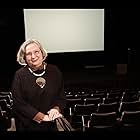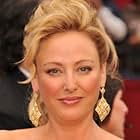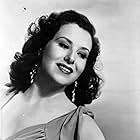An exploration of actress Marion Davies, including her relationship with newspaper tycoon William Randolph Hearst and her life both before and after her movie career.An exploration of actress Marion Davies, including her relationship with newspaper tycoon William Randolph Hearst and her life both before and after her movie career.An exploration of actress Marion Davies, including her relationship with newspaper tycoon William Randolph Hearst and her life both before and after her movie career.
- Awards
- 1 nomination
Photos
Robert Board
- Self
- (as Bob Board)
Marion Lake
- Self
- (as Mary Collins)
Carl 'Major' Roup
- Self
- (as Carl Roup)
Anthony Asquith
- Self
- (archive footage)
- (uncredited)
- Director
- Writers
- All cast & crew
- Production, box office & more at IMDbPro
Storyline
Did you know
- Quotes
Kevin Brownlow: She could be regarded as the first screwball comedienne.
- ConnectionsFeatures Beauty's Worth (1922)
Featured review
This is a very good documentary of a remarkable person. I believe that Marion would have been flattered by the honesty and poise of Virginia Madsen, Charlize Theron and others.
Marion has sadly been remembered as the inspiration for Susan Alexander Kane from Orson Welles' "Citizen Kane". That character, who had no talent and no mind of her own, and whose singing career is propped up by newspaper mogul Charles Foster Kane's obsession that she had the potential to become a great opera singer, eventually breaks down under the strain and attempts suicide. Welles might have had a much more successful career than even he had if his film had not been appearing to pick on Marion Davies, because that was one thing William Randolph Hearst could not abide. He didn't care what people wrote or thought about him, but he basically started a war with RKO over this presentation of his lady fair, and it's probably one reason "How Green Was My Valley" won best picture of 1941, and not Kane.
The documentary talks about Davies from her birth, discusses her background, and how her mother encouraged all of her daughters to go for money and not romance in men, because she believed that romance would eventually die out anyway. That might have been how Davies' relationship with Hearst started, but she stayed with him for 34 years, even after all hope of marriage to him had faded because his first wife liked the social standing of being Mrs. Hearst and her price for divorce was too high, after Marion ironically saved Hearst financially during the 1930's by writing him a check for one million dollars. How was she rewarded in the end? When Hearst died Marion had been heavily sedated and was sleeping. When she awoke, Hearst's body was gone and all signs that Hearst had ever lived in Marion's house had disappeared courtesy of his sons.
This documentary goes very much into her film career too, not just the personal story. Marion made her first film in 1917, and was one of the few actresses who successfully made the transition to sound. She even overcame a stammer, which was something I didn't know before. Hearst was making films in the 1910's, years before he met Marion, but IMHO Hearst, for all of the talents that he genuinely saw in the woman, is probably one of the reasons her film career never really took off. He was always insisting that she star in period pieces and odd productions that just did not play to her strengths. Part of the problem was that for over a decade she was associated with MGM, which did drama very well but was never good at comedies, which was Marion's forte. And when MGM did drama during the age of Irving Thalberg, it was usually his wife Norma Shearer who got the best parts. If you want to see Marion's very best work look at "The Patsy" and "Show People", two very good late silent period comedies that MGM got right in spite of itself.
Marion once told a story about William Randolph Hearst saving a stranded mouse that ventured into the house by capturing it, feeding it cheese, digging it a little hole outside, which he covered in leaves and a corner of Marion's chaise blanket which he cut up for the purpose of keeping the mouse safe and warm. I'm thinking that his karmic reward for this single act of kindness was not wealth, power or prestige but Marion Davies- she was the gift of grace and sunlight in his life.
Marion has sadly been remembered as the inspiration for Susan Alexander Kane from Orson Welles' "Citizen Kane". That character, who had no talent and no mind of her own, and whose singing career is propped up by newspaper mogul Charles Foster Kane's obsession that she had the potential to become a great opera singer, eventually breaks down under the strain and attempts suicide. Welles might have had a much more successful career than even he had if his film had not been appearing to pick on Marion Davies, because that was one thing William Randolph Hearst could not abide. He didn't care what people wrote or thought about him, but he basically started a war with RKO over this presentation of his lady fair, and it's probably one reason "How Green Was My Valley" won best picture of 1941, and not Kane.
The documentary talks about Davies from her birth, discusses her background, and how her mother encouraged all of her daughters to go for money and not romance in men, because she believed that romance would eventually die out anyway. That might have been how Davies' relationship with Hearst started, but she stayed with him for 34 years, even after all hope of marriage to him had faded because his first wife liked the social standing of being Mrs. Hearst and her price for divorce was too high, after Marion ironically saved Hearst financially during the 1930's by writing him a check for one million dollars. How was she rewarded in the end? When Hearst died Marion had been heavily sedated and was sleeping. When she awoke, Hearst's body was gone and all signs that Hearst had ever lived in Marion's house had disappeared courtesy of his sons.
This documentary goes very much into her film career too, not just the personal story. Marion made her first film in 1917, and was one of the few actresses who successfully made the transition to sound. She even overcame a stammer, which was something I didn't know before. Hearst was making films in the 1910's, years before he met Marion, but IMHO Hearst, for all of the talents that he genuinely saw in the woman, is probably one of the reasons her film career never really took off. He was always insisting that she star in period pieces and odd productions that just did not play to her strengths. Part of the problem was that for over a decade she was associated with MGM, which did drama very well but was never good at comedies, which was Marion's forte. And when MGM did drama during the age of Irving Thalberg, it was usually his wife Norma Shearer who got the best parts. If you want to see Marion's very best work look at "The Patsy" and "Show People", two very good late silent period comedies that MGM got right in spite of itself.
Marion once told a story about William Randolph Hearst saving a stranded mouse that ventured into the house by capturing it, feeding it cheese, digging it a little hole outside, which he covered in leaves and a corner of Marion's chaise blanket which he cut up for the purpose of keeping the mouse safe and warm. I'm thinking that his karmic reward for this single act of kindness was not wealth, power or prestige but Marion Davies- she was the gift of grace and sunlight in his life.
Details
- Runtime57 minutes
- Color
- Aspect ratio
- 1.33 : 1
Contribute to this page
Suggest an edit or add missing content

Top Gap
By what name was Captured on Film: The True Story of Marion Davies (2001) officially released in Canada in English?
Answer









